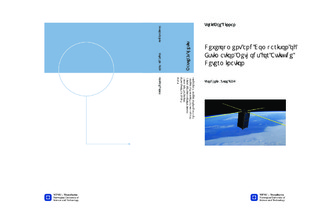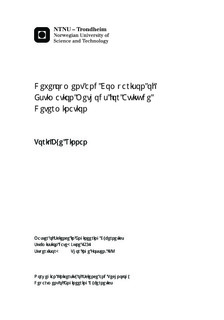| dc.description.abstract | The NTNU Test Satellite (NUTS) project, is part of the Norwegian Student Satellite programANSAT. The goal of the project is to design and launch a double CubeSat by the endof 2014. During earlier satellite projects at NTNU, solid work on design of the attitudedetermination and control for a small satellite has been done.One of the considered estimation methods for the attitude determination is the extendedquaternion estimation method (EQUEST). Further development and testing of themethod is described in this thesis. In addition to the new EQUEST method, a nonlinearobserver has been implemented and tested. The simulation results for the two methods arecompared in order to find the attitude estimation method best suited for the NUTS satellite.The new EQUEST method has several advantages over the more common Kalmanfiltering for use in small CubeSats. It is less computationally costly, and has a fast startupand settling time. Magnetorquers, which affect the local magnetic field, are used asactuators for the satellite. This makes a fast algorithm preferable, since the attitude estimationand the attitude control should be performed separately. The nonlinear observer isslower than the EQUEST method, but it can guarantee global exponential stability and itis less vulnerable to disturbances. It is therefore introduced as an alternative solution forthe attitude determination problem.The original EQUEST method builds upon the QUEST method which has been extendedto include non-vectorized terms for gyroscope measurements and attitude predictionin the method s cost function. In these terms, subtractions between the estimated andmeasured quaternions are used. The result is not entirely mathematically correct, eventhough previous testing of the method has been successful. The subtractions in the includedterms will not result in new attitude error quaternions.In this thesis, the method is further developed by replacing the subtraction terms withquaternion products. The new method is tested and compared to the original EQUESTmethod and an extended Kalman filter. It is also compared to the implemented nonlinearobserver. If the computational power of the NUTS satellite is sufficiently large, a combinationof the developed EQUEST method and the nonlinear observer could be considered forthe estimation. A combination of these two attitude estimation methods is implementedand the simulation results are analyzed. | nb_NO |

